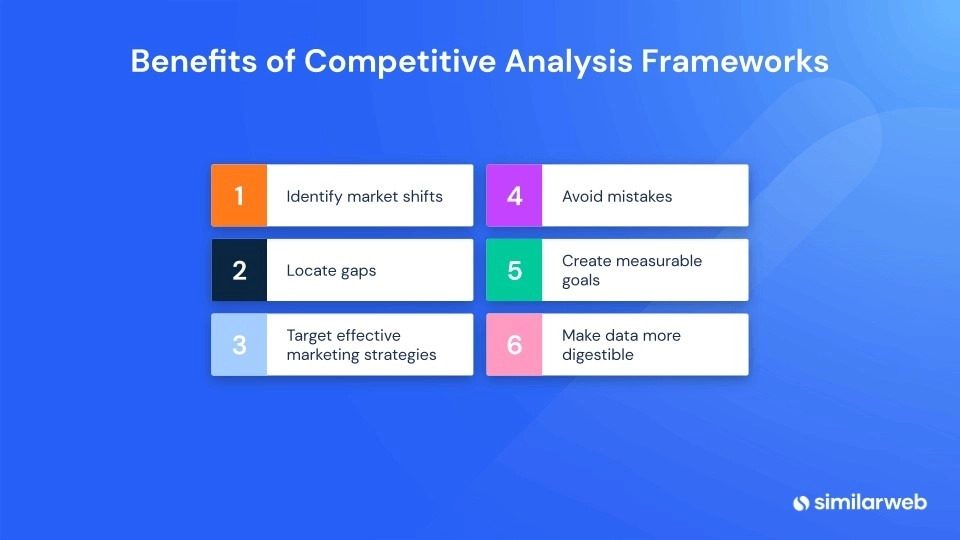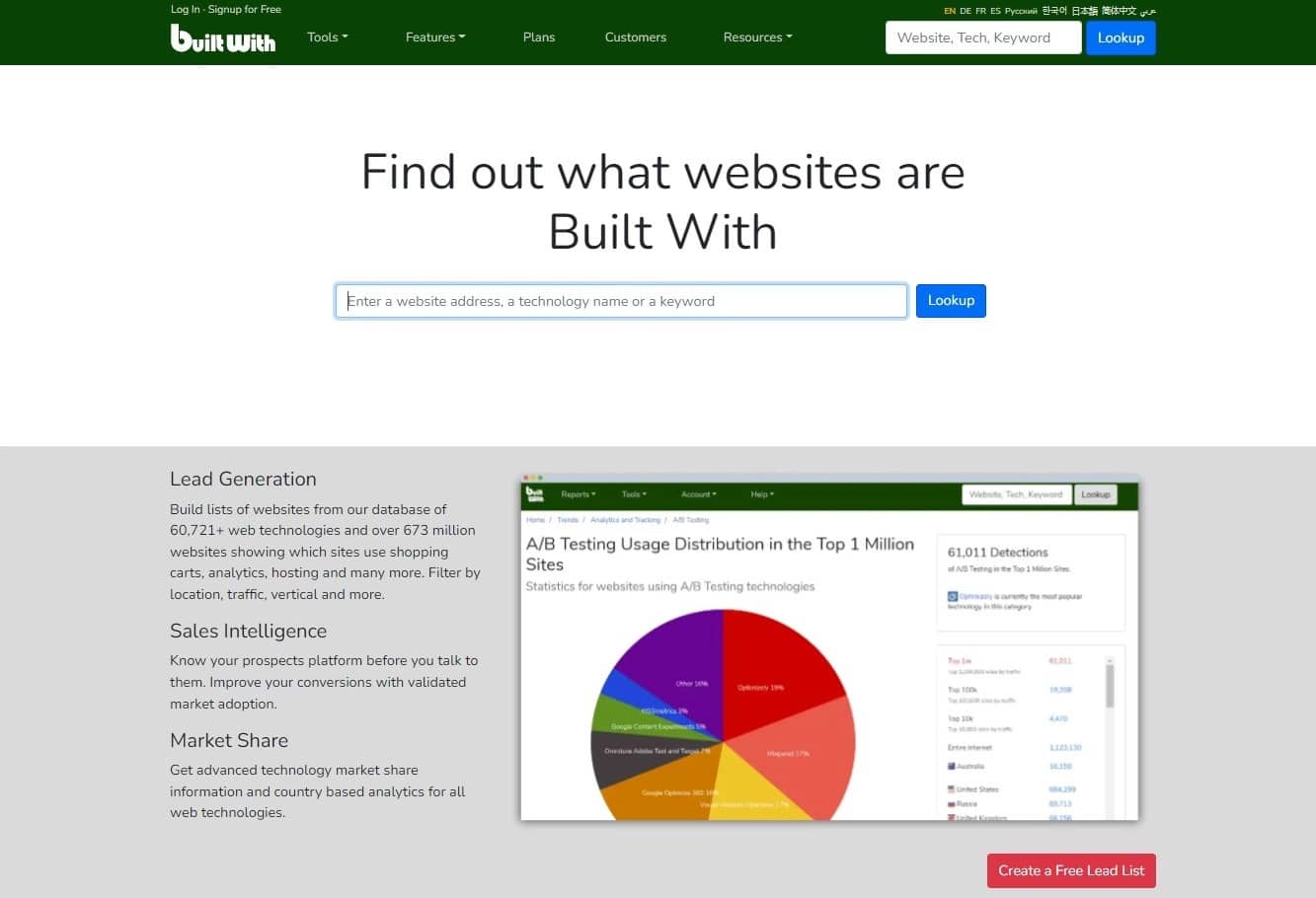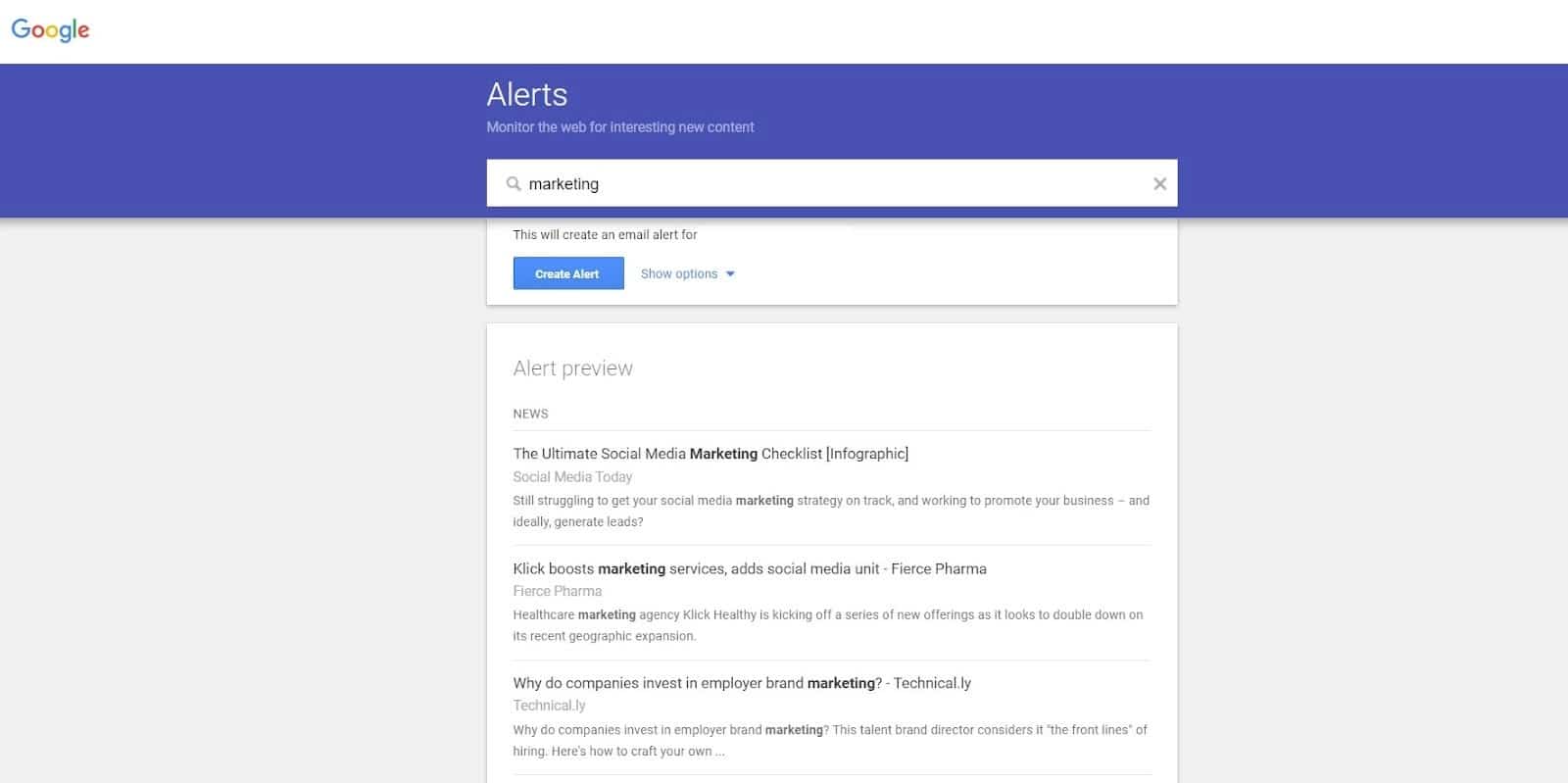Why and How to Conduct a Competitive Analysis
Look around, and you will find that whatever you can think of is probably sold by someone else. This makes it difficult for you as you will be venturing into an already occupied space. However, competition is good as there is a demand, which translates into potential growth and business expansion.
What comes next is knowing what makes you stand out among the crowd. After all, others are on the same playing field, so what can you do to tip the scales in your favor? Carry out a competitive analysis to not miss crucial intelligence data that can help your business grow.
Competitive Analysis in a Nutshell
Competitive analysis is a powerful strategy that assesses your competitors to gain an in-depth understanding of their strengths and weaknesses compared to yours. You evaluate their products/services, sales, and marketing strategies, market share, differentiators, strengths and weaknesses, reviews, and other relevant tactics to benchmark them for your benefit.
Every advantage you can gain over the competition can be critical. That means considerations from the most technical aspect of website scripts you use to the depth of marketing plans you conceive.
Every business should run a complete competitive analysis at least once a year. You can choose to do it every half year if you prefer to be on your toes at all times and stay ahead of your competitors to capture a larger market share. The competitive analysis provides you with the ins and outs of your competition and also an understanding of where your current market standing is.
Then, you identify where your competition is excelling and replicate or outperform them to stay on top of them. You also will know your competitors’ loopholes (for example, if they’ve a slow website) so that you can tackle and create potential opportunities for improved business strategies to surpass them.
Knowing about their products/services can help position yours better. Finally, your competition can be used as an accurate gauge to measure your growth. Simply put, you carry out a competitive analysis to outshine your competition.
How to Conduct a Competitive Analysis
The good news is that you don’t have to hire a professional to do a competitive analysis. You can carry out a competitive analysis by following the steps below:
1. Identify your competitors
Before you conquer a mountain, know which mountain you will be climbing. The same applies to doing a competitive analysis. Figuring out who you’re competing against is the first step to ensuring your data accuracy. In general, you can differentiate your competitors into:
Direct: Businesses that offer the same or similar product/service and target the same customers in the same geographical area.
Indirect: Businesses that provide different products but target the same customer base or satisfy the same need.
Pinpoint your direct competition as they are on the same playing field as you. Doing so allows you to evaluate your product’s viability and entry barriers. That said, you cannot afford to ignore your indirect competitors. You must keep them on your radar as they can replace you and be disruptive when biting into your existing sales. Also, you never know when they can cross over to become your direct competition.
You could do simple research on the web to identify businesses with similar products/services with the same targeted audience or different products/services targeting the same need or customer base. Check out market share statistics. Also, interview your buyers to find out what other brands they use or consider. Remember, you want to know your direct and indirect competitors to gain a different perspective on your business.
2. Research your competitors’ standing
Before you dive into the nitty gritty details, you should have an understanding of your competitors’ backgrounds and current standing. An idea of the organization helps shape your next steps when performing a competitive analysis.
Look into their current market share capture. Also, research the organizational structure and number of employees (how big are they?). Check out the profile of the people they usually hire. Find out their partnerships – suppliers, partners, and others. Take the time to perform this exercise with your customer service, sales, and marketing teams. Then map out your findings in a chart that will help you see clearer.
3. Evaluate your competitors’ product offerings
Next is to evaluate their products. After all, this is the core of their business. Hence, look into their product lineup, their quality, and features. Make a table comparison with yours. Any unique features? Quality? Resilience? How do they distribute their products? Where do they source their parts? And the list goes on.
You should purchase their products and try them out. Nothing beats hands-on experience to have a more accurate grasp of the differences and similarities with your products; this helps in your product improvement effort. Or you can find out from your buyers what other products they considered during their research before they landed on you.
4. Analyze your competitors’ sales and marketing approach
Analyzing your competitors’ sales and marketing tactics is not straightforward. However, it is vital to do so to help gauge where you’re doing fine and where you aren’t. You can consider asking some open-ended questions:
- What are their annual/monthly revenues?
- Are there months that the sales peak and slow down? Any specific patterns?
- What is the total sales volume?
- What is their sales process?
- What channels do they use for selling?
- What role does their salesperson play in the whole sales funnel journey?
- Do they use partner reseller programs?
- Do they rely more on online or physical selling or both?
- What marketing campaigns do they run?
- What channels do their marketing team frequent?
The above list of questions is not exhaustive but is good enough to kickstart things for you. Figuring out the answers will give you valuable information on how competitive their sales and marketing are so you can better equip yours to beat your competition.
Also, look at your competitors’ websites; this is a quick way to help you gauge their marketing strategies.
5. Evaluate your competitors’ pricing
Knowing how your competitors price their products/services is a great way to help lower your entry barriers. Also, you can better position your products in the market by correctly pricing them. For example, once you have confirmed that your products have better offerings and superior features, you may want to price your products higher, especially where there is a demand for such features. That said, you must highlight the reasons that justify the higher price.
Or perhaps you see that most of your competitors are offering products at high-end figures, so you fill this gap by going for the affordable range. To do so, you adjust your products so that quality is not compromised with a narrower margin but will appeal to the masses. Evaluating your competitors’ pricing helps you form a baseline on how willing people will pay for features in the goods.
Also, find out their discounts and frequency of running promotions. You’d want to get in on the game and see how to compete better. Remember, it is not easy to correctly price a product. If you go too high, nobody will buy your products (unless you have superior features), but if you price too low, people will doubt the quality. Hence, strike a reasonable balance to stay on top of industry pricing.
6. Explore your competitors’ technology
Since technology is an enabler, focus on how it benefits the business. Your competitors have that extra advantage simply because they use better tools and technology; this translates to tighter automation, scalability, more resilience, and robust systems, producing a more efficient business.
Researching the types of technology your competitors use is vital to help you increase your business momentum. For example, your competitor might be taking advantage of their website’s fast speed and high performance.
Hence, it makes sense to seek the web hosting platform your competitor uses and take advantage of the same platform for your business. You may want to explore other features the platform can afford you so you can outshine your competitor.
7. Analyze your competitors’ shipping costs
Did you know that shipping charges greatly determines if a purchase would be completed? Many users abandon their carts due to pricey shipping. If you can offer free shipping, please do so, as this is a huge perk that can differentiate one brand over another.
However, not everyone can offer free shipping. Then, explore other ways to appeal to your audience: discount coupons, points accumulation in loyalty programs, or others. Also, look into what your competition covers for their shipping; same-day shipping, standard and express shipping, international shipping, and more.
You can then negotiate with your logistics partners to offer something similar to your buyers. The end goal is to ensure you are and remain competitive enough.
8. Understand your competitors’ online presence
Knowing your competitors can come from reading what others are saying about them. Hence, check out Google to read customer reviews for your competitors. Doing so provides valuable insight into the customer experience your competitors are giving. Negative reviews help you avoid similar situations, and positive ones teach you how to perform better.
Look into social media feedback too. Social media platforms are the go-to places when you wish to gather the voice of customer (VOC) data. You can also obtain customers’ sentiments about a brand, content virality, engagement levels, and rates. Additionally, find out if your competitors are using any influencers and who.
If you come across a social platform your competitor is on and you aren’t, it makes sense to research more into that new platform. The popular social media platforms are Facebook, Twitter, Instagram, Snapchat, and LinkedIn. Understanding your competitors’ online presence helps with your brand development and product development.
9. Use tools to help stay aware of your competitors
Competitive analysis need not be overwhelming as there are tools that can help lighten your load:
Social media: Semrush has a Social Media Tracker that helps monitor your competitors’ social media presence. SocialMention, a free real-time social media monitoring tool, helps track and measure what people say about your brand.
Search Engine Results Pages (SERPs): Ahrefs and Semrush analyze the keywords your competition ranks for and perform backlink analysis. You can then benchmark the results. OpenLinkProfiler is a free quick backlink analysis tool to identify the good domains to get links from and the bad ones pointing to your site.
Traffic Volume: Another free competitor analysis tool is SimilarWeb which furnishes you with your competitors’ traffic, traffic sources, top organic keywords, and others.
Online coverage: Google Alerts helps track your competitor news. You will receive an email once there is a mention of a competitor that you set an alert for.
Wrapping Up
Competitive analysis provides you with a road map vital to help you stand out in the market. The results are your reference when comparing across the board, so you know where you are. You will gain an in-depth understanding of where you are doing well in your existing business strategy. Also, know any goldmines you can tap into to take your business to the next level.
Sell more, understand your customers’ journey for free!
Sales and Marketing teams spend millions of dollars to bring visitors to your website. But do you track your customer’s journey? Do you know who buys and why?
Around 8% of your website traffic will sign up on your lead forms. What happens to the other 92% of your traffic? Can you identify your visiting accounts? Can you engage and retarget your qualified visitors even if they are not identified?





